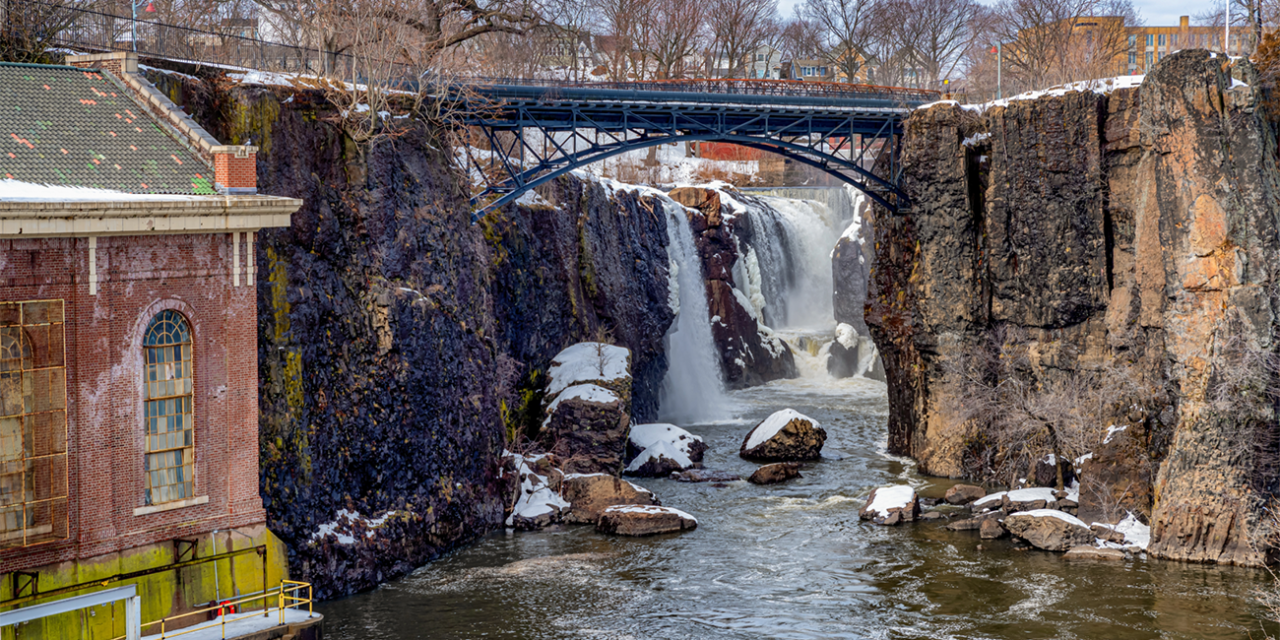Paterson, New Jersey, boasts a fascinating and diverse history, rooted in its early industrial prowess and significant cultural contributions.
Known as the “Silk City,” Paterson has played a big part in the industrial building and development of the United States. Let’s explore Paterson’s history, exploring its origins, industrial boom, cultural significance, and modern-day transformation.
Table of Contents
Early Beginnings
Founding and Planning
In 1791, Alexander Hamilton, one of the Founding Fathers of the United States, founded Paterson, envisioning it as a planned industrial city that could rival the manufacturing power of Europe.
The city was named after William Paterson, a signer of the illustrious U.S. Constitution and the Governor of New Jersey.
Society for Establishing Useful Manufactures (S.U.M.)
Hamilton established the Society for Establishing Useful Manufactures (S.U.M.) to harness the power of the Great Falls of the Passaic River, creating one of the first planned industrial cities in America.
The Great Falls provided a tremendous source of water power, essential for the burgeoning industries.
Industrial Boom
Textile and Silk Industry
The 19th century marked the height of Paterson’s industrial boom, particularly known for its silk production.
The city’s textile mills and silk factories attracted a diverse workforce, including many immigrants, which contributed to its cultural diversity and economic growth.
Locomotive Production
In 1835, the Rogers Locomotive and Machine Works was established, becoming one of the largest and most significant locomotive manufacturers in the United States.
This industry further cemented Paterson’s reputation as an industrial powerhouse.
Labor Movements
Paterson played a critical role in the labor movement.
The city was a hotspot for labor strikes, including the 1913 Paterson Silk Strike, highlighting workers’ demands for better working conditions and wages.
Cultural and Social Development
Diverse Community
The influx of immigrants from Europe, particularly Italy, Ireland, and Eastern Europe, as well as African Americans from the South, created a multicultural community in Paterson.
This diversity enriched the city’s cultural and social landscape, establishing various cultural institutions and communities.
Urban Challenges
Post-World War II, Paterson faced significant urban challenges, including economic decline, industrial relocation, and social unrest.
The city’s infrastructure began to deteriorate, and many industries moved out, leading to economic hardship for many residents.
Modern-Day Paterson
Revitalization Efforts
In recent decades, efforts have been made to revitalize Paterson. The Great Falls, designated as a National Historical Park in 2009, has become a focal point for these efforts, attracting tourism and investment.
Cultural Renaissance
Paterson’s history and diverse population continue to contribute to its cultural renaissance. The city hosts various cultural festivals, celebrates its immigrant heritage, and invests in arts and education to create a vibrant community.
Economic Development
Modern Paterson is focused on economic redevelopment, with initiatives to attract and bring in new businesses, improve infrastructure, and create job opportunities for residents. The city’s strategic location near New York City makes it a significant player in the regional economy.
Fun Things to Do in Paterson
Explore the Great Falls
Visit the Paterson Great Falls National Historical Park to see the magnificent waterfalls and learn about their role in the city’s industrial history.
Paterson Museum
Discover Paterson’s rich history at the Paterson Museum, from its industrial achievements to its cultural heritage.
Lambert Castle
Take a tour of Lambert Castle, a historic landmark offering wonderful panoramic views of the city and exhibits on local history.
Hinchliffe Stadium
Visit this historic sports stadium, which has hosted numerous significant events, including Negro League baseball games.
Garret Mountain Reservation
Enjoy outdoor activities such as hiking, picnicking with friends and family, and bird-watching at this scenic park.
Q&A: Learning More About Paterson’s Legacy
Q: What role did the Great Falls play in Paterson’s development?
A: The Great Falls provided a vital source of water power, which was essential for the city’s early industries, particularly the textile and locomotive sectors.
Q: How did the influx of immigrants shape Paterson?
A: Immigrants brought diverse cultures, skills, and traditions, enriching Paterson’s social fabric and contributing to its economic growth.
Q: What were the key events of the Paterson Silk Strike of 1913?
A: The strike was a pivotal labor movement demanding better working conditions and wages for silk workers, highlighting the city’s role in labor rights history.
Q: How is Paterson addressing its modern challenges?
A: Paterson is working to overcome its urban challenges through revitalization efforts focused on economic development, historical preservation, and community engagement.
Q: What makes Paterson a culturally vibrant city today?
A: Paterson’s rich history, diverse population, and commitment to arts and education contribute to its vibrant cultural scene.
Embracing Paterson’s Future with a Nod to Its Past
Paterson’s journey from an industrial powerhouse to a city embracing cultural renaissance and economic revitalization is an inspiring example of resilience and adaptability.
Paterson continues to be a vital part of New Jersey’s history and future by honoring its past while forging a path toward future growth. Whether exploring its historical sites or enjoying its modern amenities, Paterson offers a unique blend of tradition and progress.
Paterson’s ongoing development and its commitment to preserving its rich history serve as a model for other cities facing similar challenges.
The community’s spirit and strategic initiatives ensure that Paterson will continue to thrive and evolve, creating a promising future for its residents.
As Paterson moves forward, it does so with a deep respect for its historical roots and a clear vision for sustainable growth.
The city’s ability to adapt and be flexible to changing times while maintaining its unique identity makes it a fascinating place to explore and a vibrant community to be part of.





